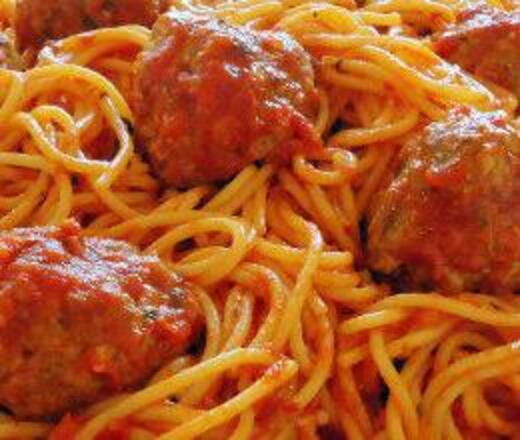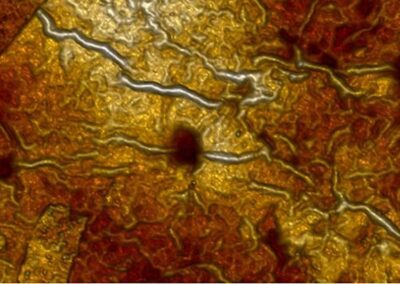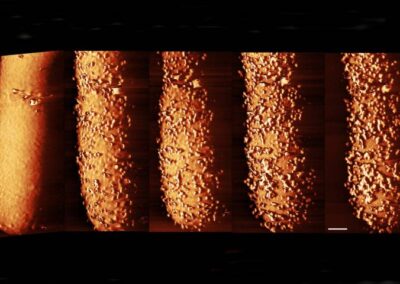A sticky-spaghetti-with-meatballs model may be sufficient to describe how the nucleus in each of our cells selectively allows the entrance and exit of certain molecules, while blocking others to protect genetic material and normal functions of the cell. That is the conclusion based on research by an international team of scientists, led by the London Centre for Nanotechnology and CIC biomaGUNE (San Sebastian, Spain), and published in the journal eLife.
Cells of humans, animals and plants have a nucleus that contains most of their genetic material. For the appropriate use of this genetic material, it is essential that proteins and other molecules can only enter and exit the nucleus in a highly selective way, via channels in the protective membrane that surrounds the nucleus.
Inside these tiny channels (nuclear pore complexes) reside specialised proteins (FG domains) that arrange similarly to sticky spaghetti, to act as a selective barrier. The molecules that cross the barrier can be thought of as meatballs. Some very particular meatballs are nuclear transport receptors, which shuttle rather freely into and out of the spaghetti-like FG domains, and enable other molecules to do so too.
To study how these meatballs penetrate the channels, the scientists first made layers of FG domains of only 100,000th of a millimetre thick, and next measured how nuclear transport receptors bound to these layers. Since the results were highly similar for different FG domains and different nuclear transport receptors, the next step was to design a physical model that only included the features that were universal to all, namely that the FG domains behaved as rather sticky spaghetti interacting with the nuclear transport receptors as even stickier meatballs. This model was very successful in reproducing the experimental data. Moreover, and encouragingly, it is consistent with earlier, less quantitative work of the London team on the real channels (http://www.ucl.ac.uk/news/news-articles/1114/241114-cell-nuclei-pores).
Given the enormous complexity of the biological structures and processes involved, it is remarkable that such a simple (polymer-physics) model applies. Its success implies that the basic mechanism underlying selective transport into and out of the cell nucleus could well be explained based on generic physical principles.
Beside the London Centre for Nanotechnology and CIC biomaGUNE, the work included important contributions from the MRC Laboratory of Molecular Biology, Cambridge, the Max Planck Institute for Biophysical Chemistry in Germany, and the University of Osnabrück in Germany.
Journal link: A physical model describing the interaction of nuclear transport receptors with FG nucleoporin domain assemblies. Raphael Zahn, Dino Osmanović, Severin Ehret, Carolina Araya Callis, Steffen Frey, Murray Stewart, Changjiang You, Dirk Görlich, Bart W Hoogenboom, and Ralf P Richter. eLife (2016)



